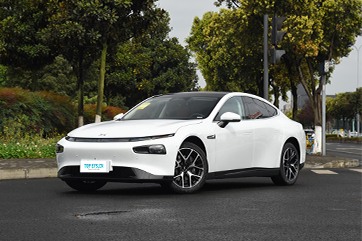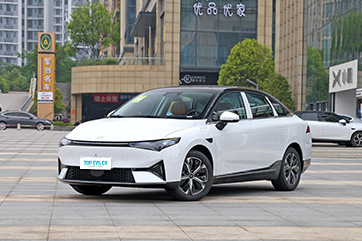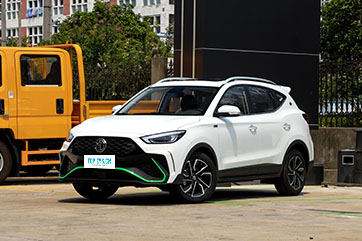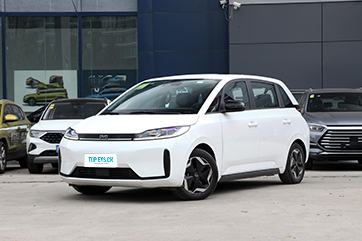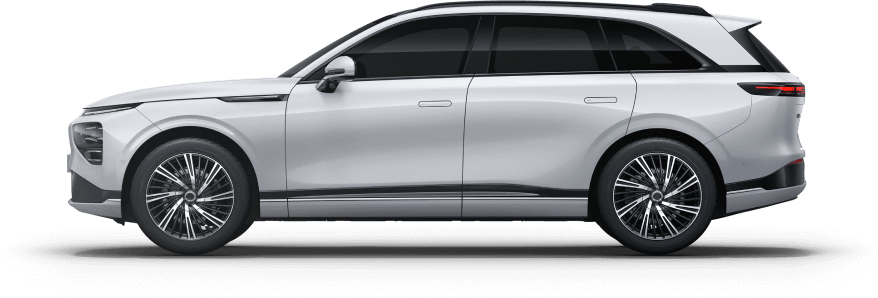"Hey Siri, tell a joke", I believe many Apple phone users have tried to talk to Siri in this way. Apple siri is an intelligent voice assistant that can help users with various tasks, such as asking for the weather, time and location, and also perform some commands such as sending text messages, making phone calls and setting alarms. Meanwhile, Apple siri already supports more than 40 languages and dialects.
In fact, there is an "invisible hero" behind this voice assistant - Sai Lun Si, which created this siri for Apple together. And SailorSys provides technology in more than 70 languages for the more than 475 million cars on the road today.
What voice interactions are currently available for consumers to experience in the cockpit? What are the commercial possibilities for the future of cockpits offered by the recent chatGPT craze? Recently, Stefan Ortmanns, CEO of Sailwheel, who has been flying around the world on business trips, came to Shanghai to visit a number of automotive customers, and AutoZone took the opportunity to have an in-depth conversation with Stefan about these questions.
.png)
■ Convenience and safety Voice interaction closer to real people
At present, almost every car company will install voice assistants on its new cars, which allow owners to complete some basic functions such as opening and closing the windows, switching on and off the air conditioning, searching for music, and so on. Some data shows that in-car voice interaction penetration reaches 86% in 2021, second only to assisted driving.
.png)
There is a logical line behind this. Cars are starting to use large touch screens and fewer physical keys, so operation is a matter of looking at the screen, which can affect driving, so adding voice control is safer and more convenient. Until the advent of fully autonomous driving, in-car voice interaction is still the most convenient, safest and most popular way to interact with users in the car.
The seemingly simple voice interaction actually has a lot of gold, as it involves the intersection of several technologies such as artificial intelligence, cloud computing and big data. Although there are many in-car voices on the market with a low level of intelligence, the in-car voice systems of the new power companies are at the forefront of the industry, with new powers such as Wei Xiaoli putting a lot of effort into voice customisation, image customisation and function customisation.
.png)
For example, the Azera Nomi is able to talk to the owner through anthropomorphic emoji images and make various funny expressions based on the statements, allowing Azera owners to chat with it when they are tired or bored, which to a certain extent eliminates driving fatigue. Of course, it has excellent voice recognition, even when there is music playing inside the car or a noisy environment outside the car, it can recognise the conversation with Azera owners. This is all backed by the voice technology of Sailunsee.
"We started working with Azera from NT1.0 until NT2.0 was delivered, and now we are talking about NT3.0, which is a platform-level cooperation." Stefan revealed. As the pace of Azera's overseas presence accelerates, Sai Lun Si will also provide more global voice extensions for it.
As it stands now, in-car voice mostly requires a fixed voice wake word, such as Siri, Nomi, Google Assistant, Amazon EchoAuto, Zebra, etc. to start a conversation with the car. In Stefan's eyes, the user experience is very important and how to be able to make the car talk to the user like a human is the ultimate goal. For example, if your assistant knows you're talking to it, you don't need to press the voice button or say "Hey..." You don't have to press the voice button or say "Hey..."?
.png)
In order to make communication more natural, SailorSense has recently released "JustTalk", which provides a more intuitive, life-like interaction experience by knowing when to be called upon based on the words spoken by the user, the way they are spoken and the context of the associated conversation, without the need to press a voice button or wake up words.
The solution has reportedly been adopted by Mercedes-Benz and is the first to be used in MBUX, the intuitive multimedia system featured in the new Mercedes-Benz E-Class. "It allows direct dialogue with the car and the digital cockpit, just as it does now with people.
In addition, Cerence also offers car companies a "Cerence look". For example, if you are driving through Shanghai and you see the Shanghai Tower and you don't know the exact name of the building, just say "Tell me more about this building"; or when you see a restaurant, just say "Give me some information about this restaurant ".
There is another scenario, in a large three-row SUV, how to reduce the impact of car noise and various disturbances on in-car chatter? For this, Cerence has developed the Cerence ICC in-car communication system. You can chat with the rear passengers without having to turn around while driving, and your eyes can always look ahead and observe the surrounding road conditions to ensure safe driving.
There is also a growing demand for voice recognition outside the car. For example, you can use voice commands to "close the trunk" or "open the boot" when you're in a hurry, or you can interact with someone outside the car at night without opening the windows to ensure safety. All of these solutions are available from Sailwheel.
▪ China-led R&D chatGPT applications will become more widespread
In-vehicle voice interaction has been a market hit in recent years. According to a search of the SkyEye App, the number of companies related to in-car voice in China has reached 196.
At present, there are three types of suppliers in the in-car voice industry. The first type, the head enterprises represented by Sai Lun Si and Ke Da Xun Fei. According to the data, in the 2020 ranking of pre-installed voice recognition and interaction suppliers, Sai Lun Si and Ke Da Xun Fei continue to occupy the top two market shares, with a combined share of over 70%. But the numbers have started to show signs of decline.
The ecological suppliers represented by BAT follow closely behind, BAT can be more timely in terms of POI and data updates compared to the technology vendors, but BAT hopes to master the entrance to the car, and will generally have the whole family bucket solution bound, with a strong desire for control and insufficient openness, and less autonomy for car companies. Considering that Baidu has announced that it is down to build cars, it is still unknown whether the subsequent partnership with peers can continue.
.png)
On the competition in the Chinese market, Stefan admits, "I really like competition, it's good for everyone and we can learn from each other. We are doing very well in China and the Chinese market is leading in terms of numbers and user base."
It is understood that Cerence values the Chinese market so much that many products are developed in China and then exported globally. For example, Cerence Assistant was developed in China under the leadership of Cerence. "We have a very strong R&D team in China, and we use European technology, coupled with Chinese speed to match." Stefan says, "If it's a brand new platform, we can deliver in as little as six months, while if it's an existing mature platform, we can deliver the product within a week."
In addition to the advantages in R&D technology and speed, Stefan believes that "Sai Lun Si is well positioned in China, especially in terms of overseas opportunities."
A number of new energy vehicle companies in China now have plans to go overseas, which provides opportunities for Sailunsee. For example, Sai Lun Si has provided conversational AI with global language support to BYD, Azera, Link, Hongqi, SAIC-GM-Wuling, SAIC-VW and FAW-VW and Xiaopeng.
In addition, Saerun Si China is also doing a lot of AI solutions when it comes to modelling acoustic models and language models, for example ChatGPT has the potential to be used in the cockpit of a car.
Stefan explains that Saerun Si is preparing to launch Car Knowledge - which goes beyond the car manual and does practical simulations with ChatGPT and OEMs. "Chat GPT may give the wrong information, for example if you ask Chat GPT how to turn on the wipers, it can only give you very generic results, while he knows the model, but some models may not have the wipers on in that position."
With its understanding of the in-car user experience, CycloSys can help users get the information they need. car Knowledge uses self developed generative AI to enable drivers to ask questions, describe situations or even just type a few words to find much needed information. A key success factor for generative AI solutions is based on the trustworthiness of the information, which can have a direct impact on the safety of the driver. It is crucial that the Sailwheel Si solution understands not only the context in which the driver is asking the question, but also the origins of the codes in the various knowledge sources provided by the OEM (e.g. user manuals, documentation, sensor information, etc.). It was revealed that Sailwheel Si is currently being run and validated by ten OEMs worldwide.
.png)
More and more car companies are now introducing the Chat GPT concept into their cockpits. At the Family Technology Day, RISO recently said that it had applied its own cognitive model, Mind GPT, to the RISO classmate, making the upgraded RISO classmate a "butler" for the car. "It is reported that the technology is similar to voice interaction. It is reported that the technology is similar to the ChatGPT version of voice interaction, which has undergone the key training process of the large language model and is capable of generating safe, accurate and logical conversations.
Not coincidentally, Mercedes-Benz and Microsoft have also jointly announced recently that the two companies are working together to expand the use of artificial intelligence, with plans to integrate this technology into the vehicle's voice control system, with 900,000 vehicles in the US equipped with the MBUX infotainment system available for testing. In-vehicle ChatGPT is said to be able to support more dynamic conversations - not only understanding the owner's voice commands, but also engaging in interactive conversations that can range from location information, recipes, and even some more complex questions, in turn allowing the driver's eyes to focus more on the road.
In short, in the future, big models will make smart cockpits even smarter, and ChatGPT will be used more and more widely in smart cars, bringing users a more convenient and comfortable travel experience.

.png)
.png)
.png)
.png)
.png)
.png)
